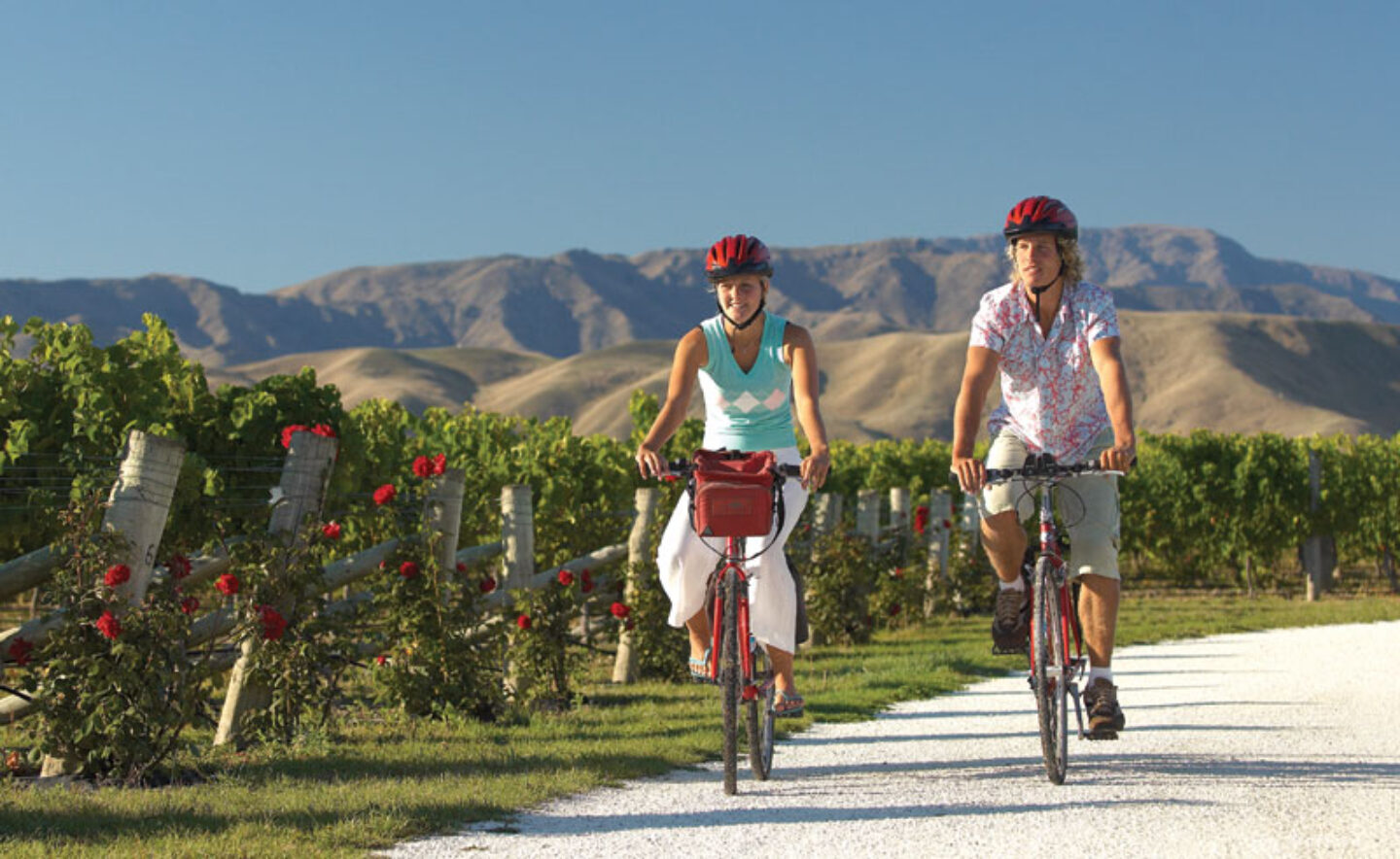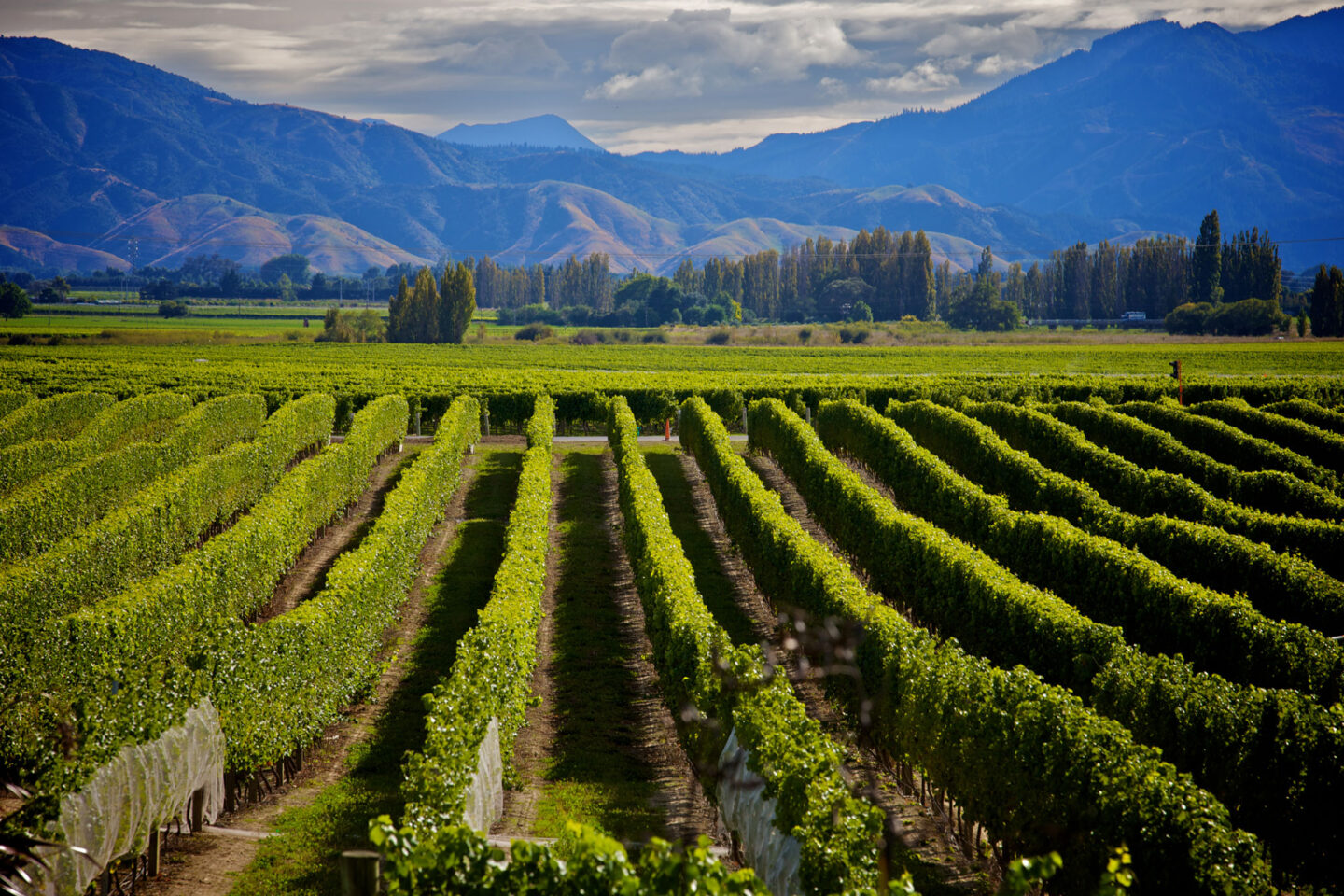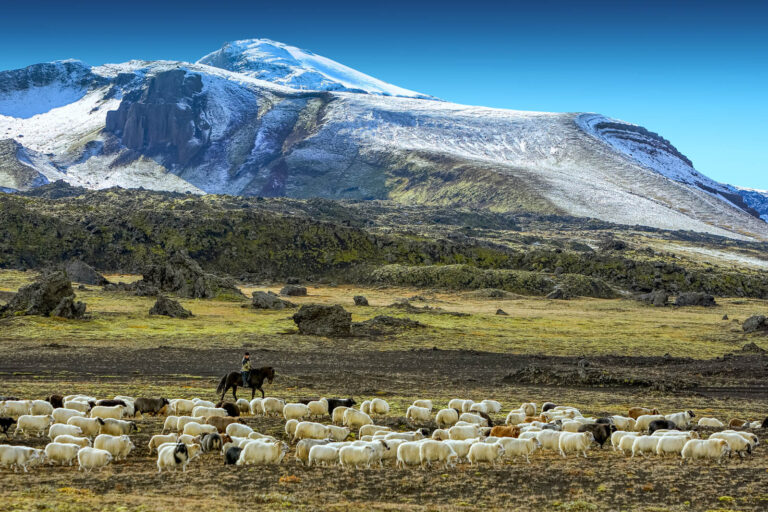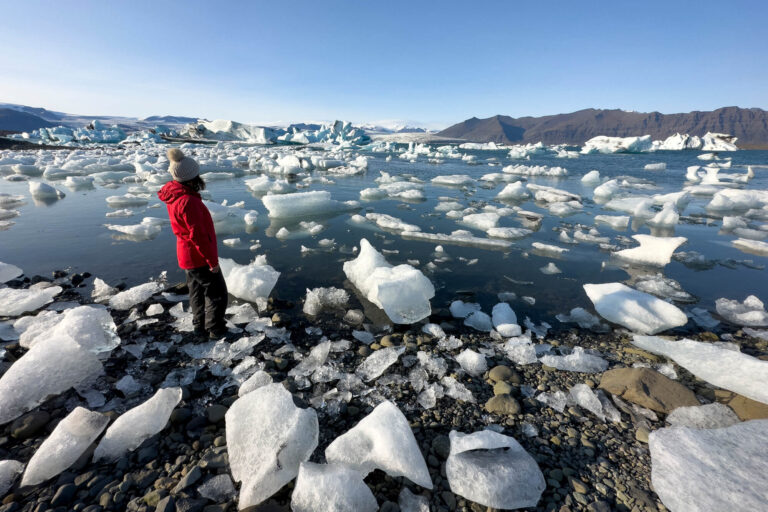
Explorer Tom Avery, one of only 41 people in history to have reached the North and South Poles on foot, explores the premier wine growing region of New Zealand.
I have spent much of the past decade freezing my extremities off in places like the Arctic and Antarctic. So when the team at Waitrose set me my next challenge, cycling through New Zealand’s Marlborough wine region, I thought it was going to be a breeze. How wrong I was.
To start with I was to be accompanied by my wife, Mary. Fit as a fiddle she may be, however she made it clear from the outset that she was looking forward to the wine tasting bit far more than cycling from winery to winery.
Velo, vino
Our mission was to visit six separate wineries (they don’t call them vineyards in these parts) in the Wairau Valley in the heart of the Marlborough region, and sample the wines that make their way onto Waitrose’s shelves back home. As we studied the map, it became apparent that these wineries were some distance apart. Much peddling would be involved, and no motorised transport was allowed.
We had only cycled a few miles from the outskirts of the region’s main town of Blenheim when we arrived at our first stop, Wither Hills, named after the undulating range of golden hills bordering the southern end of the broad Wairau valley. Most of the names of the region’s wines have some geographical or historical connection with the area – Cloudy Bay (where the Wairau River meets the Pacific, and named by Captain Cook), The Ned (the highest peak in the Marlborough Region) and Astrolabe (the French explorer Dumont D’Urville’s ship which anchored off the coast here some 200 years ago).
And that pioneering spirit extends to the wines themselves. It’s extraordinary to think that they’ve only been producing wine here since the mid 1970s, yet Marlborough’s Sauvignon Blanc in particular has already acquired such cult status that it is widely regarded as amongst the best in the world. And it’s all because this tiny corner of the South Island boasts perfect growing conditions. At the same latitude as Burgundy and blessed with a warm, dry climate, with abundant sunshine and cool nights – Marlborough has the ideal conditions for a long, slow ripening process. The alluvial soils give the wines their own unique character.
Is it too early?
It had barely gone 10am, and we were already sipping our first glass of Wither Hills’ refreshing Sauvignon Blanc with head winemaker Ben Glover in their brand new state-of-the-art cellar door complex. Ben talked us through a selection of their most popular varieties, including the Chardonnay, Pinot Gris and Pinot Noir with great understated Kiwi passion.
“It’s a tough life this wine tasting business, we mused.”
Although Mary and I love our wines, I must confess that we are definitely not wine connoisseurs, and neither of us had even heard of a Pinot Gris. On tasting it for the first time, we looked at one another and said “Wow”. Even though it’s made from the same grape as a Pinot Grigio, the Pinot Gris is much more full bodied, darker and less minerally. We were totally bowled over by the taste. “I can’t believe you’ve been hiding this from your English cousins all this time!” I protested to Ben. “Pinot Gris is now all the rage Down Under”, he explained, “but you Europeans are only just discovering it. We believe it’s going to be Marlborough’s next big success story.”
Satisfied with our early progress, we found ourselves a couple of bean bags on the immaculate Wither Hills’ lawn and plonked ourselves down in the sun, with the bottle of Pinot Gris within easy reach. It’s a tough life this wine tasting business, we mused.
Before we knew it, it was approaching midday, and we had almost totally forgotten that we still had another five wineries to visit and dozens of wines to sample before sunset. Next on the list was Villa Maria, only two miles away, but straight into the teeth of a gusty westerly wind. Progress was painfully slow (in part because the side pouches on our bikes were now weighed down with a wide selection from the Wither Hills cellars).
An historic vintage
Villa Maria is one of the oldest wineries in the region, and was first planted at a time when New Zealand wines had barely made a name for themselves. This explains why Villa Maria’s enterprising founder Sir George Fistonich gave his wines their European name. We were amazed at just how many different varieties they produced. Pick of the bunch was Villa Maria’s Rabbit Row, a crisp Sauvignon Blanc, blended from grapes from several local wineries in the valley.
“An iconic setting for a truly iconic wine.”
Next stop was the Jackson Estate, established some 170 years ago by Adam Jackson, one of the early English settlers to the region. John Stitchbury and his wife Jo are the fifth generation of Jacksons to farm this land and they were wonderful hosts. We sampled their incredible medal-winning Stitch Sauvignon Blanc beneath the branches of the enormous gum tree, planted by the first Jacksons in 1867. An iconic setting for a truly iconic wine.
Our legs were definitely feeling it by the time we pulled into the Cloudy Bay driveway, a further two miles down the road, (although it felt more like twenty two thanks to the deceptive strength of the wind). Never was a truer word spoken than by the cellar manager Janine Carter who told us that, “everyone remembers where they were the first time they drank Cloudy Bay”. Mary and I will never forget as we were on honeymoon in the Caribbean. Much to our amusement, we had met a lovely couple on the ferry over from the North Island who told us that their second child had been conceived the night they were introduced to the unique taste of Cloudy Bay!
The first thing that strikes you about all these world-famous wineries is just how small they are. Many are family-run, and even the various Cloudy Bay wineries (amongst the largest in Marlborough) produce only around 75,000 cases a year. We tasted all their whites and reds, but if we had to choose our favourite, it would be the Pelorus sparkling wine, named after Pelorus Jack, a dolphin whose tales of escorting stricken boats to safety in the late nineteenth century are enshrined in Kiwi folklore. In fact the dolphin motif on every Cloudy Bay bottletop is none other than Pelorus Jack himself.

With an annual production of just 3,500 cases a year, the Herzog winery may be small, but the place oozes class. From its highly acclaimed restaurant, complete with Michelin-starred international chefs (the perfect spot for famished cyclists to enjoy a much needed lunch break!), to the quality of its wines, it really is a very special place.
Proudly showing off the first harvest of the season, Therese Herzog explained how she and her husband Hans emigrated from Switzerland with the aim of producing Bordeaux-style wines in New Zealand. The results are exceptional, with the Hans Viognier standing out as something totally unique, a spectacular oak-aged golden dry white wine totally different from anything else that Marlborough had tempted us with so far.
We could have talked to Therese for hours, but the day was flying by. Having reached the western extremity of our route, we would now have our backs to the wind as we flew down Rapaura Road for the final stretch of our day. Or so we thought. To our horror, we stepped outside to find that the wind had done a complete one-eighty. “Ah yes”, explained Therese, “the wind is Marlborough’s best kept secret”.
Keep on moving
An eye-watering six miles of tarmac separated us from our next stop at Saint Clair. Row after row of lush vines stretched interminably to the horizon. We made the mistake of trying to take a shortcut down a farm track and were promptly forced to make an about turn after coming face-to-face with dozens of sheep being pursued by a farmer on a quad bike. The sight of us trying to speed away from the oncoming melée with panic written across our faces had the farmer in stitches.
Bathed in late afternoon sunshine, the verdant Richmond Ranges provided a spectacular backdrop to the penultimate leg of our journey. Occasionally we passed a giant solitary wind turbine, looking like something out of The War of the Worlds. We later learnt that Marlborough is prone to spring frosts, an oenologist’s worst nightmare, and these turbines are designed to keep the air currents moving, thereby minimising damage to the new grapes.
Very occasionally, during the most severe cold snaps, helicopters are drafted in from far and wide to hover over the Wairau Valley in the dead of night in a desperate bid to keep the frost at bay. I can’t imagine that happening in the Loire.
A taste of pure heaven
More gorgeous wines flowed at Saint Clair. Marlborough is aiming to rival Otago as the home of New Zealand Pinot Noir, and if their 2007 prize-winning vintage from the Omaka Valley is anything to go by, they’re well on the way. This particular Pinot Noir was pure heaven.
Being polite Brits, it felt like bad manners to spit all these amazing wines back out again. It was much easier (and more enjoyable) just to swallow. Five wineries and 28 individual wine varieties later, our cycling was decidedly wobbly for the final five miles to the Astrolabe winery.
It’s hard to describe how we felt when we reached our final destination. Our bodies were aching from the strenuous exercise, the buffeting winds and a hard day’s wine tasting. Despite all that, we felt exhilarated and up for more.
Astrolabe’s head winemaker Tim Adams, and Jason Yank, the general manager led us to an idyllic, sheltered olive grove. Here our thirst was quenched by a glass (or two) of Astrolabe’s Discovery Sauvignon Blanc. We were further spoiled with freshly baked bread and a large bowl of the winery’s own home-made olive oil. We just savoured the moment, discussing the joys of wine, in this utterly beautiful and unique corner of the world.
Having been lucky enough to have seen first hand the hard work, skill, attention to detail and love that these winemakers put into every single drop, there’s no doubt that the next time we’re in Waitrose choosing a bottle of wine from the shelf, those with a Marlborough label will definitely catch our eye.
by Tom Avery
(as published in Waitrose Magazine October 2010)
Feeling inspired?
To start planning your New Zealand holiday, contact our Kiwi Travel Specialists who can share their expertise and make recommendations suitable to your interests, timeframe and budget.






 Instagram
Instagram
 Facebook
Facebook
 YouTube
YouTube